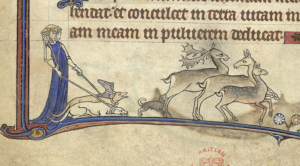Summary
More on music! (Shoutout to episode 40/music part 1, which came out a while ago now.) We talk about dulcimers and gitterns, viols and tabors, Jew’s harps and gamelans, and Jesse’s favorite–the bagpipe. Also tuning, temperament, aaaand a little Monty Python.
Annotations
1/ The Early Instrument Database at Case Western Reserve University, Ross Duffin.
2/ Dulcimer https://en.wikipedia.org/wiki/Dulcimer
AKA “A damsel with a dulcimer in a vision once I saw”: I think the lyre just feels more like a post-Raphielite instrument.
Dulcimer, lyre, and lute, the Ferrara Ensemble directed by Crawford Young playing an excerpt from “Fortuna Desperata.” (See website for full citation.)
3/ Gittern
Gittern with harp, Ferrara Ensemble playing an excerpt from “Chanconeta Tedescha” (see website for full citation).
Workshop medieval gittern https://youtu.be/eA4CtdXnWWs
https://en.wikipedia.org/wiki/Viol
A quick google suggests that $10k might be on the cheap side for a contrabassoon. Possibly because most of the ones that are made are professional quality.
5/ Jew’s Harp / Jaw Harp / Mouth Harp
https://en.wikipedia.org/wiki/Jew%27s_harp
Doctor Who Theme Song. Fun fact: Although it sounds like a theremin, the Doctor Who theme song was actually produced by recording a single plucked string and then cutting the tape up, putting it back together in weird ways, playing it faster or slower, etc.–a technique known as musique concrète. Considering that it was done in 1963, this was considered pretty innovative. (Also, belated happy Doctor Who day to everyone–it’s November 23, right around the time I am editing this.)
6/ Tabor
https://en.wikipedia.org/wiki/Tabor_(instrument)
Brave Sir Robin clip: https://www.youtube.com/watch?v=BZwuTo7zKM8 (sorry about the lack of pixels, apparently every Monty Python clip was uploaded to the internet around 2006). (Contains a timbril.)
7/ Gamelan
Em makes reference to the unification of Indonesia. The short version of the story here is that much like China, India, and French Indochina, Indonesia was once a bunch of independent kingdoms/sultanates/what-have-yous. Like India and French Indochina, it was forced to think of itself as one place rather than a large island archipelago (actually, the largest, with over 17,000 islands!) by colonial interests, in this case the Dutch and the Dutch East India Company (see also episode 11, note 30 for passing mention of them). Some of these, uh, sedimented countries stayed together after the colonials pulled out (e.g., Indonesia), some fell apart (e.g., French Indochina), and some stayed mostly together but with a few notable pieces leaving the main (e.g., India).
8/ Xylophone
The xylophone is also mentioned in nearly every alphabet book for children because English has so few words that start with X (or at least such words that have been deemed appropriate for children).
Technically, I (Em) played the broken vibraphone in the marching band–when a vibraphone is broken or unplugged, it turns into a xylophone, I think.
9/ The organ! This is Bach’s Toccata and Fugue in D minor BWV 565: https://youtu.be/Nnuq9PXbywA
Link to Nancy Kito: https://twitter.com/EnsLeonarda/status/1241870110874308608?s=20
Video of someone hitting “transpose” at the wrong moment: https://www.classicfm.com/composers/handel/messiah-organ-fail/
10/ Jesse’s favorite: The Medieval Bagpipe
Here are some images of medieval bagpipes (and sound from a modern recreation) from the Case Western site: https://caslabs.case.edu/medren/medieval-instruments/bagpipe-medieval/
[Bagpipes are double reed instruments, like the bassoon and the oboe (also the heckelphone and the sarrusophone). Of these, obviously the bassoon is the best. As a former bassoonist, I wish I could say this was the first time that I’ve had a conversation where I cast scorn and/or aspersions on the bagpipe, but it is not.–Em]
11/ Horns
Carnyx: https://en.wikipedia.org/wiki/Carnyx
Carnyx, performed by Abraham Cupeiro.
The SNL skit! Jesse teaches this in class: https://www.youtube.com/watch?v=MrpQVSVa2QI
12/ Oud and lute song from the Cantigas de Santa Maria (written in medieval Galician-Portuguese language during the reign of Alfonso X of Castile (1221–84) and often attributed to him). Here are images from a manuscript of the Cantigas (and scroll down to hear the duet from the episode): https://thedutchluthier.wordpress.com/2016/07/08/cantigas-de-santa-maria/
Oud and lute, performed by Sequentia.
For more on Alfonso X, who wrote a song about a ferret he owned as a pet and really loved, see episode 29, note 22.
13/ Sequentia is an awesome group and has done a lot of work on Hildegard’s music: https://www.sequentia.org/projects/hildegard.html
We’ve discussed Hildegard in episodes 5, 6, 7, 8, 16, 26, 29, 30, and 32. She’s important. (Wow, I need to index her better.–Em)
14/ Medieval Dances (performed by Ensemble Chominciamento di Gioia http://www.futurestyle.org/classic/archives-classic/c/chominciamento-di-gioia.htm )
15/ Tuning https://en.wikipedia.org/wiki/Musical_tuning
16/ Temperament https://en.wikipedia.org/wiki/Musical_temperament
17/ Quarter tone scale from Wikipedia: https://en.wikipedia.org/wiki/Quarter_tone
https://en.wikipedia.org/wiki/Arab_tone_system
18/ Ross Duffin How Equal Temperament Ruined Harmony (and Why You Should Care)
https://www.amazon.com/Equal-Temperament-Ruined-Harmony-Should/dp/0393334201
19/ Hurrian Hymn https://en.wikipedia.org/wiki/Hurrian_songs
https://youtu.be/Tx6v0t5I5SM (performed by Michael Levy)
20/ Bach Prelude in three temperaments: https://youtu.be/kRui9apjWAY (performed by John Moraitis on the spinet)
Spinet https://en.wikipedia.org/wiki/Spinet
Podcast: Play in new window | Download





